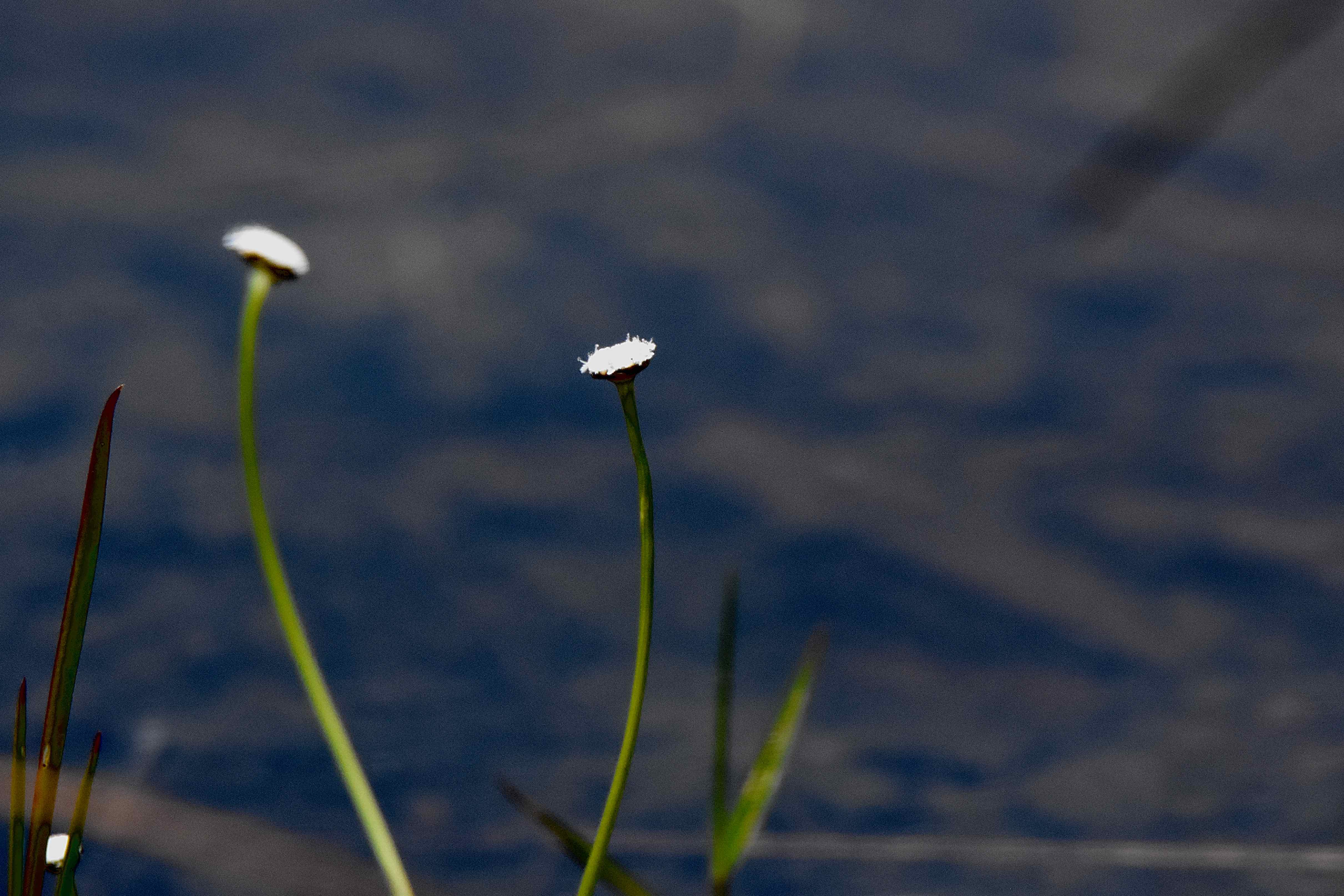
Flattened hatpins, photographed at Acreage Pines Natural Area, Loxahatchee, Palm Beach County, in July 2016.
The name says it all. The most distinguishing feature of flattened pipewort, Eriocaulon compressum, is its soft, compressible flowerhead. In fact, it might be the only feature you see.
Flattened pipewort is similar in looks to two cousins, tenangle pipewort, Eriocaulon decangulare, and yellow hatpins, Syngonanthus flavidulus. All three have a single button-like flowerhead atop a long, pipe-like stem, or scape, in botanical terms.
Yellow hatpins is on the short side, and has some pale yellow mixed into the otherwise black and white flowerhead. Tenangle pipewort is taller, about the same height as flattened pipewort but has a hard, firm flowerhead compared with flatten’s cushiony flowerhead. Tenangle’s scape is distinguished by its ribbed scape.
One other thing separates flattened pipewort: where it grows. All three require moist to wet soil and grow in similar habitats, but of the three, flattened pipewort is probably the most “aquatic.” How aquatic? So aquatic that it’s used in aquariums. So aquatic that its leaves are commonly underwater. You might not find it available at your local nursery for your water garden, but you might find it for sale on the internet for your fish tank.
Flattened pipewort is a Florida native found throughout most of the Sunshine State. One of the few places where it’s not found: the Keys. It’s also found as far north as New Jersey, south through Virginia and North Carolina, along the Atlantic and Gulf coastal plains to Texas. The Institute for Regional Conservation in Delray Beach considers it rare in South Florida; it’s also considered rare in Maryland.
It is a perennial. Favored habitats include wet pine flatwoods and ditches.
A single flowerhead stands atop a pipe-like stem, or scape, one or two feet long. The flowerheads resemble those small marsh mellows put in cups of hot chocolate, each containing a multitude of tiny blooms, both male and female. The marsh mellow comparison is apt in another way, since the heads are soft and compress when squeezed.
Black spots in the flowerhead are the pollen-holding parts. It’s believed that flattened pipewort is insect pollinated. It flowers year round, but more prominently in late winter into spring.
Flattened pipewort also reproduces vegetatively via rhizomes, or underground stems, that send up new plants.
As we said, this is the most aquatic of South Florida’s pipeworts, but it does need some dry time in order to reproduce. Seeds won’t take hold in permanently wet sites.
Flattened pipewort is generally found in places with less than a foot of water, but it can survive in much deeper water.
Flattened pipewort leaves are long and narrow and concentrated at the base. The root mass is larger in proportion to the foliage; the roots actually do some of the “breathing” for the plant, taking in carbon dioxide produced by bacteria working on decaying organic material in the soil. The gas is passed through hollow chambers to the leaves, which conduct photosynthesis, the process plants use to produce the sugars needed to live. The oxygen “waste” is similarly passed from the leaves through the hollow chambers to the roots, where they’re “exhaled” back into the ground.
The genus name, Eriocaulon, is a mashup of two Greek words, Erion, meaning wool, and Caulos, meaning stock. In other words, wooly stalk, referring to hairs on the scape.
Flattened pipewort is a member of Eriocaulaceae, the pipewort family. Other common names: hat pins or hatpins. Note: members of Eriocaulaceae so resemble each other that the common names hatpins, bogbuttons etc. are often used interchangeably.



